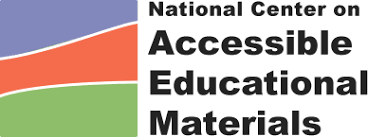Table of Contents
OER
-
Background
Open Educational Resources (OER) include e-textbooks, videos, animation, rubrics, simulations, assessments, and any other tools that support teaching and learning. In general, OER are in the public domain, open, free, and may be used and modified. Specific definitions from SETDA, The William and Flora Hewlett Foundation, and UNESCO are highlighted below.
SETDA
OER are “teaching and learning materials licensed in such a way that they are free and may be used, reused, remixed, and otherwise customized to meet specific needs” In other words, OER are teaching, learning, and resource materials, tools, and media that reside in the public domain and may be used and re-purposed freely by educators, students, and self-learner. SETDA
The William and Flora Hewlett Foundation
OER are teaching, learning, and research resources that reside in the public domain or have been released under an intellectual property license that permits their free use and re-purposing by others. Open educational resources include full courses, course materials, modules, textbooks, streaming videos, tests, software, and any other tools, materials, or techniques used to support access to knowledge. The William and Flora Hewlett Foundation.
UNESCO
Open Educational Resources (OERs) are any type of educational materials that are in the public domain or introduced with an open license. The nature of these open materials means that anyone can legally and freely copy, use, adapt and re-share them. OERs range from textbooks to curricula, syllabi, lecture notes, assignments, tests, projects, audio, video and animation. UNESCO
-
Open vs Free
OER are teaching and learning materials that are free and may be used, reused, mixed, and otherwise customized to meet specific needs. Free materials available for students, teachers, schools or districts which are not openly licensed do not have the same level of permitted uses such as adaptation, retention, or wide scale distribution. If the resources have an open license, teachers can change the OER to create a new resource and share that resources with others. Students can also create OER to share with their peers.
Key Questions
- What is your district policy on who owns teacher and student created content?
- Do you know how to apply an open license?
Type Cost Licensing Flexibility Example Open Educational Resources Free
or minimal cost (non-electronic print costs)Open Licensing (Creative Commons or other) Yes
License that permits the free use and re-purposing of the content by others. (some restrictions may apply)OER Commons Free Digital Learning Resources Free Copyright Copyright: Owner has the right to control the copying and dissemination of an original work. Smithsonian Education State Digital Learning Repository Free (some states require state credentials for access) Open licensing or Copyright Many state repositories include both open and copyrighted materials. Flexibility depends upon the type of resource. Alabama Learning Exchange -
Licensing
With appropriate licensing, OER can have a significant impact on teaching and learning. Teachers using OER are able to find free materials appropriately licensed and then choose materials from various sources to meet the needs of their students. In some cases, teachers may wish to change the OER to create a new resource and share that resources with others. Students can also create OER to share with their peers. When using OER, states, districts, schools, educators, and students need to have a basic understanding of the copyright and licensing laws.
Creative Commons, a nonprofit organization that offers free copyright licenses to facilitate sharing and use of teacher-created work, has six main licenses so that reuse, revision, and redistribution rules are defined at the outset. The six options (with their corresponding symbols) are listed in the following table:

Attribution: “lets others distribute, remix, tweak, and build upon your work, even commercially, as long as they credit you for the original creation. This is the most accommodating of licenses offered.” 
Attribution ShareAlike: “lets others remix, tweak, and build upon your work, even for commercial purposes, as long as they credit you and license their new creations under the identical terms….All new works based on yours will carry the same license, so any derivatives will also allow commercial use.” 
Attribution No Derivatives: “allows for redistribution, commercial and non- commercial, as long as it is passed along unchanged and in whole, with credit to you.” 
Attribution Non-Commercial: “lets others remix, tweak, and build upon your work, and although their new works must acknowledge you and be non-commercial, they don’t have to license their derivative works on the same terms.” 
Attribution Non-Commercial ShareAlike: “lets others remix, tweak, and build upon your work non-commercially, as long as they credit you and license their new creations under the identical terms.” 
Attribution Non-Commercial No Derivatives: “is the most restrictive…, allowing others to download your works and share them with others as long as they credit you, but they can’t change them in any way or use them commercially.” -
Locating OER
OER can fall into many different categories of instructional materials. Determine your need and search critically for resources.
- Teacher/student usage of “building block” open resources (filter by open licenses on search engines)
- Individual classroom use of open supplemental lessons/units (state or non-profit OER repositories)
- District adoption/interim adoption of open full curriculum materials (state or non-profit OER repositories, OER developer sites)
- Building/district creation of open full curriculum materials (internal development)
Washington State Office of Superintendent of Public Instruction provides Resources for Using OER that can be used by school districts and teachers interested in implementing OER and communicating with stakeholders in their educational communities.
-
Reviews & Curation
When selecting OER, the quality of the content should be considered. Many factors contribute to quality instructional materials. Though definitions may vary somewhat from one professional organization to the next, all agree that quality materials should be robust materials aligned to learning standards regardless of whether the materials are print or digital, full course materials or supplemental materials, open or all rights reserved copyright. Visit the Quality Materials section of this guide to learn more.
Curation
-
#GoOpen
The U.S. Department of Education is encouraging the use of OER to change teaching and learning. District and state leaders are working together with education technology companies and nonprofit organizations to share effective strategies for OER.
Statewide #GoOpen initiatives are committed to supporting districts and educators with the transition to the use of high-quality OER.
#GoOpen States will:
- Adopt/Implement a statewide technology strategy that includes the use of openly licensed resources as a central component.
- Develop and maintain a statewide repository solution for openly licensed resources.
- Develop the technical capability to publish OER to the Learning Registry.
- Participate in a community of practice with other #GoOpen states and districts to share learning resources and professional development resources.
- Create a webpage to share the commitment to #GoOpen and document the state’s progress.
This information provided by the Office of Education Technology #GoOpen Districts webpage
-
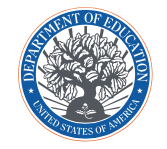
#GoOpen District Launch Packet
The #GoOpen District Launch Packet is for districts that are including openly licensed educational resources into their curriculum.
-
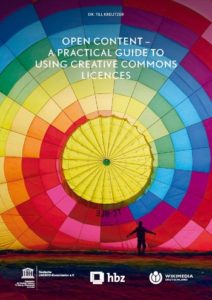
Open Content – A Practical Guide to Using Creative Commons Licenses
This is a practical guide to using Creative Commons Licences.
-
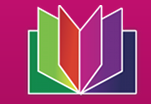
Why Open Resources Matter
Results from a U.S. Department of Education short video contest explaining the benefits of Open Educational Resources for teachers, students and schools everywhere.
-
Accessibility
With the shift from print to digital, education leaders must proactively consider the accessibility of digital resources for all students, including students with disabilities. If accessibility features are not designed into digital materials, it will be difficult or impossible for some students to use them due to a range of physical, sensory and/or cognitive disabilities. If materials cannot be used by these students, their ability to learn and achieve will be adversely effected.
The AEM Center provides resources to help educators select and/or create accessible OER content to support learning in inclusive settings. Resources include a set of quality indicators for incorporating OERs into a robust procurement system for AEM.
Learn more! -
Utah Case Study
In 2010, David Wiley from Brigham Young University contacted Nebo School District about piloting an OER program. The pilot was conducted by the Utah Open Textbook Project, a partnership involving BYU, Nebo School District, and the Utah Office of Education. Teachers from Spanish Fork High School, Payson High School, and Payson Junior High School worked together over the summer to develop the first science OER in the district.
For the first iteration of the OER chemistry materials, the teachers primarily used the content available on the CK-12 platform. The CK-12 website has free open source K-12 materials that can be modified and mixed, as needed. The content was contained in flexbooks, where the teachers selected specific chapters and content to include in the biology digital materials.
Each summer, teams of district teachers meet to update the OER materials; constantly adding additional resources and images, including student feedback. During this process, reviewers target areas where students are struggling or where they have misconceptions. In addition, specific textbooks were edited to meet the expectations of concurrent enrollment courses at Utah Valley University.
-
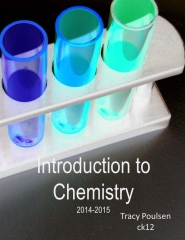
Chemistry Flexbook
Introductory chemistry text for use by students in Nebo School District general chemistry and concurrent enrollment chemistry. This book targets the Utah State Core Curriculum for chemistry with additional content.
-

Utah Education Network – OER
Utah has geared up to begin providing teachers, students, and parents with materials to support the Utah Core Standards, instruction, and teaching. Created by groups of content and teaching experts, including university faculty, district and school specialists, teachers, and USOE staff.
-

Utah Open Textbook Project
The Utah Open Textbook project is examining the deeper learning and cost savings that can be achieved when open textbooks replace traditional, expensive textbooks in public high school science classrooms.
-

Utah’s Recommended Instructional Material Searchable Database
Utah provides a recommended, searchable database for instructional materials
-
-
State Policies
Shift to Digital
In 2001 the Utah State Textbook Commission changed its name to the Utah State Instructional Materials Commission to reflect interest in emerging digital and multimedia formats for instructional materials. Since that time, Utah has been evaluating digital instructional materials through an annual review process.
Utah’s Instructional Materials Center recommends textbooks and other forms of curriculum to the Utah State Office of Education. Teachers meet to evaluate the available instruction materials, assessing strengths and weaknesses of the instructional materials, and to ensure that the state core curriculum is included in the materials. Instructional materials that meet at least 80 percent of the required curriculum and have no other major issues are placed on the state approved list.
In Utah, each school district has the constitutional authority to use digital resources and innovative educational technologies as they deem appropriate to meet educational goals and requirements. Districts may use allotted funds for the purchase of technology as determined by local boards of education. However, the state provides resources to support the district level decisions. Utah maintains the Recommended Instructional Materials System (RIMS), an online state database that educators can sort by publisher, subject, category, course, and adoption action, such as “Recommended Teacher Resource.” The state’s adoption process is to provide a general list of approved materials, but ultimate decision-making rests with local education agencies.
OER Initiative
Utah defines OER as materials that have been created using content that is not copyrighted and therefore restricted in use. OER are openly licensed materials that can be used for teaching, learning, student support, and teacher support. While they are openly licensed, they are not free: there is a substantial effort involved in collecting and reviewing resources to ensure that they are aligned to the Utah Core Standards and that they are updated and improved on a regular basis.
-

K-12 OER Collaborative
The K-12 OER Collaborative creates high-quality, comprehensive OER resources to support K-12 mathematics and English language arts. The K-12 Collaborative includes 12 states and several supporting organizations, including Learning Accelerator, CCSSO, Achieve, SETDA, and iNACOL.
-

Utah Education Network – OER
Utah has geared up to begin providing teachers, students, and parents with materials to support the Utah Core Standards, instruction, and teaching. Created by groups of content and teaching experts, including university faculty, district and school specialists, teachers, and USOE staff.
-
-
Nebo School District
Nebo School District is located in Utah County, Utah. Nebo is the seventh largest school district in Utah serving nearly 30,000 students. Nebo, a suburban school district, is one of the fast growing districts and includes five high schools, six junior high schools, two alternative schools, and 27 elementary schools. Nebo’s population is primarily white and thirty-eight percent of students are eligible for the free and reduced lunch program.
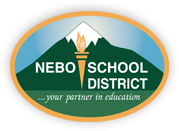
In 2010, David Wiley from Brigham Young University contacted Nebo school district about piloting an OER program. The pilot was conducted by the Utah Open Textbook Project, a partnership involving BYU, Nebo School District, and the Office of Education. Teachers from Spanish Fork High School, Payson High School, and Payson Junior High School worked together over the summer to develop the first chemistry OER in the district. Brian Blake from Payson High School developed the OER for AP Biology, Biology, and Anatomy.
Digital Learning Footprint
Nebo School District’s leadership supports a digital learning environment and is moving towards a 1:1 computer to student learning environment for all students in all schools over the next several years. Nebo is currently working to remodel the wireless networks over the summer to increase broadband capacity and meet demand. The current system often overloads when there are too many users accessing the internet at the same time.
Payson High School has 400-500 tablet devices for students to use. Payson has three computer labs that are open before and after school, as well as during lunch. Most students have access to the internet at home or through the library. Payson High School is implementing a 1:1 computer to student ratio for all sophomores for the upcoming school year. Spanish Fork High School has approximately 1,000 devices.
-
Implementation
Implementation of OER
In 2010, David Wiley from Brigham Young University contacted Nebo school district about piloting an OER program. The pilot was conducted by the Utah Open Textbook Project, a partnership involving BYU, Nebo School District, and the Office of Education. Teachers from Spanish Fork High School, Payson High School, and Payson Junior High School worked together over the summer to develop the first science OER in the district.
Tracy Poulsen, Spanish Fork chemistry teacher lead the development of the first chemistry OER in the district. For the first iteration of the OER chemistry materials, the teachers primarily used the content available on the CK-12 platform. The CK-12 website has free open source K-12 materials that can be modified and mixed, as needed. The content was contained in flexbooks, where the teachers selected specific chapters and content to include in the digital materials.
One of the key changes in the chemistry OER from the traditional textbook is that the teachers targeted the
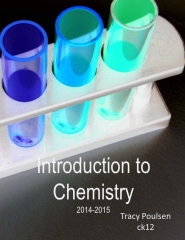 state chemistry curriculum in the order in which they wanted to teach the material. Take a look at the 2015-16 Chemistry flexbook.
state chemistry curriculum in the order in which they wanted to teach the material. Take a look at the 2015-16 Chemistry flexbook.Poulsen states that in the next school year she is moving towards using the digital version. So far, she has primarily used the printed version in her instruction.
For the printed version, students can analyze what they read on charts and pictures. The flexbook has extra wide margins for note taking and summarizing
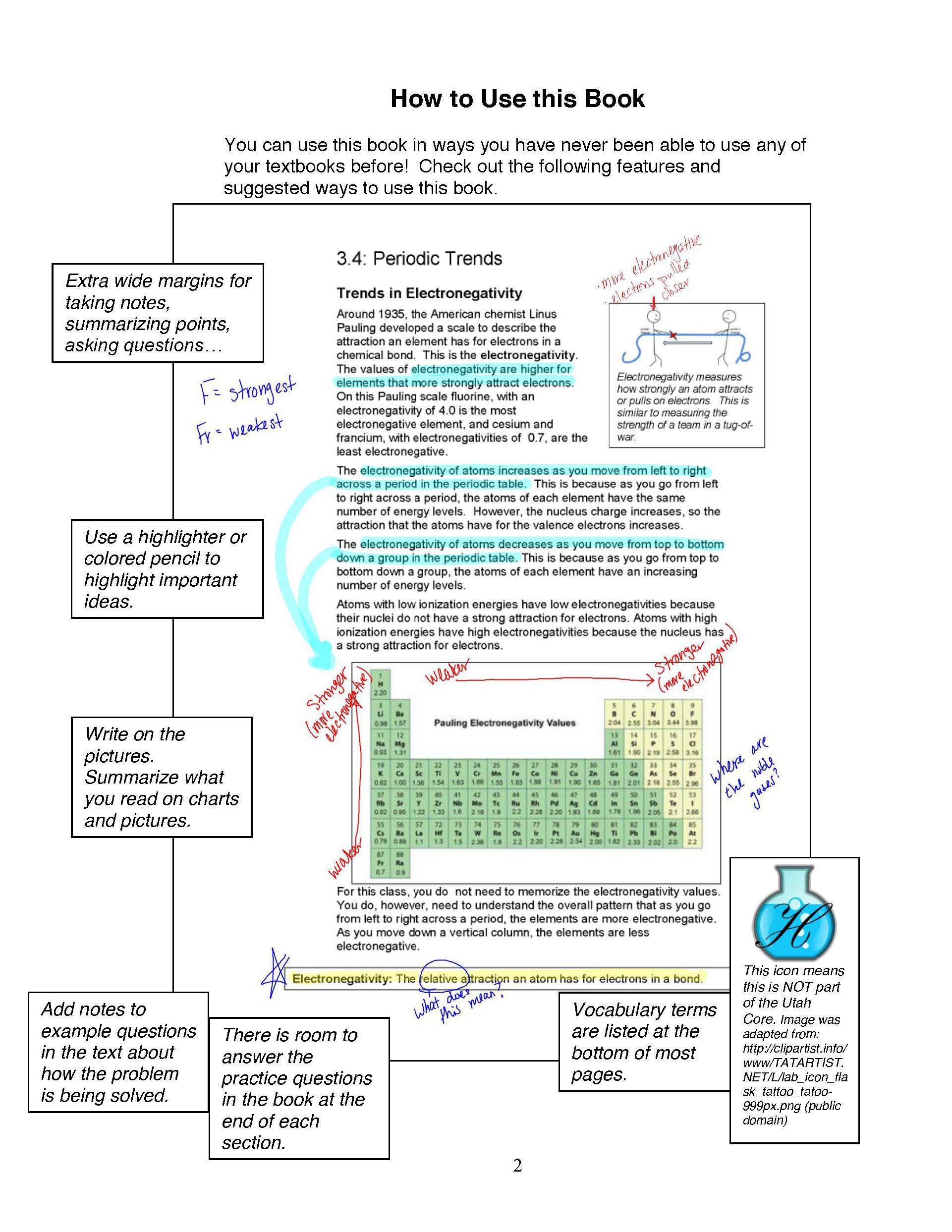 points. Students can use a highlighter or colored pencil to highlight important ideas. With the flexbook, students are able to create their own content by adding to the materials, furthering self-directed learning.
points. Students can use a highlighter or colored pencil to highlight important ideas. With the flexbook, students are able to create their own content by adding to the materials, furthering self-directed learning.As Poulsen transitions to using the digital version, she recognizes that one of the benefits is that the content is searchable and that students can edit and add to the materials in new ways. Poulsen states that, “one of the challenges in using the digital version is in developing new ways to actively teach literacy strategies to my students, such as identifying and highlighting important texts and using digital graphic organizers to summarize information”.
Brian Blake from Payson High School developed the OER for AP Biology, Biology, and Anatomy. According to Blake, “the real growth in the Biology OER came when other teachers brought their experiences to the table. Then we had multiple brains of knowledge adding to the content”. Blake states that over the last three years, he has used the Biology OER books in both print and digital format. In the first year, the majority of the higher level students seemed to prefer the printed version because they could highlight, bookmark and personalizing their books for the first time. Overall, the school is working to shift to digital instructional materials and the transition is still in process.
Each summer, teams of district teachers meet to update the OER materials; constantly adding additional resources and images, including student feedback. During this process, reviewers target areas where students are struggling or where they have misconceptions. In addition, specific textbooks were edited to meet the expectations of concurrent enrollment courses at Utah Valley University
All of the science materials are used school-wide. Additionally, three of the five high schools in the district are now using the OER chemistry materials as well as several classes in neighboring districts.
Content Delivery
The Open Textbook Project envisioned that as each new version is readied, the district could distribute the digital content in common standard formats that include PDF, ePub, or HTML; or the district could choose to print out a sufficient quantity on demand and give each student a copy that can be written in, highlighted, and kept.
In Nebo, Payson High School provided the OER materials in both digital and printed formats for students. The materials are available for students, teachers, parents, and administrators. The printed format costs approximately $5 each compared to $80 for a textbook. So far, the print format is the preferred version for educators and students.
Research and Evaluation
Nebo School District does not have specific research to link the use of OERs to student achievement. However, empirical evidence from Poulsen shows that after implementing OERs and teaching literacy strategies, student test scores increased. Blake also reported that he was able to teach learning techniques along with content because the students had a book that was relevant to his specific class and core content.
-

Chemistry Flexbook
Introductory chemistry text for use by students in Nebo School District general chemistry and concurrent enrollment chemistry. This book targets the Utah State Core Curriculum for chemistry with additional content.
-
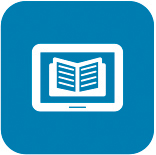
CK-12 Foundation
The CK-12 Foundation was created to produce free and open source K-12 materials aligned to state standards. All textbooks—called “flexbooks”— available through CK-12 are free, available online, and customizable.
-
-
Vetting
In Utah, school districts make their own decisions in evaluating instructional materials, and may consult the state’s general list of approved materials. In Nebo, Utah, textbook adoption is even more decentralized, with each high school selecting their own textbook and/or instructional materials. Representatives from each high school meet to evaluate the available instructional materials. Ideally, the same courses within the district would use the same textbook, however, each individual school is responsible for funding their acquisition of textbooks/instructional materials, so the schools makes the final decision.
The Open Textbook Project envisioned a district paying its best teachers to work together revising and adapting the initial open textbook to meet specific needs. This custom book would contain a teacher’s edition, instructional supports, explanations, text, practice sets, and assessments. Each summer teachers would invest a small amount of additional time to update the book as needed.
For the first iteration of the OER chemistry and biology materials, teachers primarily used the content available on the CK-12 platform. The CK-12 website has free open source K-12 materials that can be modified and mixed, as needed. The content was contained in flexbooks, where teachers selected specific chapters and content to include in the OER materials.
-
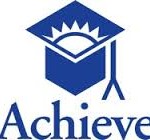
Achieve’s OER Rubrics and Evaluation Tool
Achieve, in collaboration with leaders from the OER community, developed eight rubrics to evaluate the quality of instructional resources. Achieve also partnered with OER Commons to develop an online evaluation tool. OER Commons, an online repository for open education resources, is now hosting the tool and its resulting evaluation data. Resources rated on OER Commons create a pool of metadata, and this metadata will be shared through the Learning Registry with other interested repositories.
-

Chemistry Flexbook
Introductory chemistry text for use by students in Nebo School District general chemistry and concurrent enrollment chemistry. This book targets the Utah State Core Curriculum for chemistry with additional content.
-
-
Professional Learning
Nebo School District teachers, Poulsen and Blake, have traveled throughout Utah to districts and schools to provide training and information about OER. Paulsen has also presented at various conferences in the state and in California.
Blake is active in the Utah Science Teachers Association and presents at the Career, Technology and Education (CTE) conferences and UCET. Sarah Young, the STEM liaison for the state, and Ricky Scott, the state science specialist at USOE, continue to champion this project and provide support to any district, school, or teacher hoping to learn more about OER.
According to Poulsen, one of the key benefits of the OER materials, especially for new teachers, is that the core instructional content directly ties to the state’s curriculum standards and it is not a generic textbook where one size fits all. The OER materials provide a great starting place that is more manageable for newer teachers. Teachers are part of the Professional Learning Community (PLC) and are collaborating about content on a monthly basis.
-
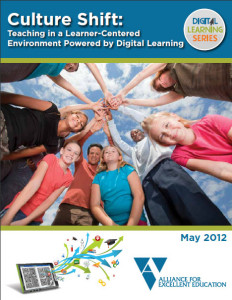
Culture Shift: Teaching in a Learner-Centered Environment Powered by Digital Learning
Alliance of Excellent Education This report examines the characteristics of learner-centered instruction and the support that educators and schools will require to make such an approach work.
-

Free Textbook Project
This is a powerpoint presentation about OER in Utah by Tracy Poulsen from Spanish Fork High School
-
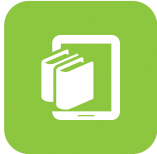
Standards for Professional Learning Resources
Professional learning that increases educator effectiveness for all students requires prioritizing, monitoring, and coordinating resources for educator learning. The Learning Forward Standards are general standards for professional learning across K12 that highlight the importance of sustainable, ongoing, job-embedded professional learning opportunities.
-
-
Budget
The Open Textbook Project provides a calculator that allows the district to estimate its savings compared to its current textbook scenario. For example, if a district spends $80 per printed textbook for 5,000 students and uses it for six years, that’s an investment of about $400,000 or about $13.33 per student per year. Adopting open educational resources, paying a team of four teachers to update the material each year at $30 per hour for a total of 60 hours, and adding printing would cost about $152,000 or $5 per student per year. (Footnote 32)
Could a $5 textbook really compare to an $80 one? Wiley and his fellow researchers found in a limited experiment that Utah high school students learned the same amount of science in classes using the open textbooks as they did in classes using the traditional textbooks. SETDA Out of Print.
Beyond cost considerations, the research team noted that “OER [allows] teachers and students to remix content in locally meaningful ways, to share a variety of types of learning resources, and to enable the best resources for teaching a specific topic to be more easily found.” SETDA Out of Print.
-

SETDA’s Examining the Budget Implications of Digital Content
SETDA considers the budget implications of using digital content.
-

Transformative Budgeting for Digital Learning
New Jersey presents strategies for transformative budgeting – a process by which innovations in schools are accomplished within existing budgets. The report includes models from several districts.
-
-
Lessons Learned
Some of the lessons learned in using OER materials:
- Easily scalable – All of the science materials are used school-wide. Additionally, three of the five high schools in the district are now using the OER chemistry materials as well as several classes in neighboring districts.
- Difficulty working through the copyright/licensing laws for printing OERs.
- Learning how to adapt and not “reinvent the wheel” an OER can start with content that others have created and that is then modified to meet your teaching style.
- With OERs you don’t need to be a perfectionist because you can update and change the OER for the next school year.
- OERs targeted content is especially helpful for substitute teachers since the OER provides a clear path for instruction.
- Students can easily catch up if they are absent since they know what is next in the curriculum since the OERs are designed to match the teacher’s preference for presenting the materials.
- Students often felt intimidated by the size of the traditional textbook and extraneous information. With OERs, students know that all the core content is included in the materials.
- Students have the ability to be more conscious of their own learning and learn how to become self-learners by adding/modifying their OER materials.
-
Washington Case Study
In 2012, the state Legislature passed a bill to develop a Washington Reviewed OER Library of high-quality, openly licensed K-12 courseware that is aligned with the Common Core State Standards (CCSS) and an associated awareness campaign to let districts know about these resources. The OER library provides school districts with a broader selection of materials that can be updated more frequently than traditional textbooks.
Each district determines what they use as instructional materials. This includes OER. Five school districts in Washington State were awarded OER grants to help support district adaptation and implementation of openly licensed educational material aligned with state standards. All content created or modified with Washington OER grant funds is openly licensed and available to everyone. Spokane Public Schools was one of the districts to receive grant funding, and they are highlighted in this case study. Spokane is implementing OER for core materials for all general education teachers, with a concentrated focus on K-8 mathematics. In December 2013, the school board approved the use of EngageNY OER math materials as the interim math curriculum for K-8 students.
-
State Policies
Washington follows the Hewlett Foundation definition of OER that states: “OER are teaching, learning, and research resources that reside in the public domain or have been released under an intellectual property license that permits their free use and re-purposing by others.” The Washington K-12 OER bill clarifies that open courseware “allows others to use, distribute, and create derivative works based upon the digital material, while still allowing the authors to retain the copyright.”
In 2012, the state Legislature passed a bill to develop an OER Library of high-quality, openly licensed K-12 courseware that is aligned with the Common Core State Standards (CCSS) and an associated awareness campaign to let districts know about these resources The OER library provides school districts with a broader selection of materials that can be updated more frequently than traditional textbooks. School districts can access the openly licensed courseware for free. Instead of purchasing or leasing instructional materials, use of OER creates the potential to move those funds into other areas of critical need like professional development or technology capacity.
As of August 2015, the Office of Public Instruction (OPSI) has conducted three OER review cycles. To date, 24 full-course mathematics curricula and 60 English language arts units have been evaluated by educators across the state. OPSI reviewed these open resources using nationally recognized review instruments and the same methodology as you would review any traditional instructional materials. In the 2015 OER Review Summary, reviewers found a number of resources in both mathematics and ELA that were well-aligned to the CCSS, and worthy of consideration by districts choosing instructional materials. OPSI provides this information to districts, but it does not endorse or require the adoption or use of any specific instructional materials by districts or schools.
-
Spokane Public Schools
Spokane Public Schools
Spokane Public Schools (Spokane), located in Spokane County, is the largest school district in eastern Washington with approximately 30,000 students. Spokane includes both urban and rural schools. Nearly 70 percent of the student population is white and 59 percent of students are eligible for the free and reduced lunch program. Spokane includes seven high schools, six middle schools, and thirty-four elementary schools. Spokane offers several different school options including schools for gifted and talented students and students with disabilities.
Digital Footprint
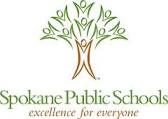
Spokane supports a blended learning and virtual learning environment that encourages equitable access to education. The Spokane Virtual Learning (SVL) curriculum is aligned to state standards and created at the district level. Spokane’s blended learning program supports schools with one blended learning teacher per school. In addition, the educational technology department supports all schools in implementing the district’s technology plan and standards. Schools in Spokane are generally between a 1:2 and 1:4 computer to student ratio learning environment. Spokane is in their first large-scale implementation of OER materials for core materials for all general education teachers, with a concentrated focus on K-8 mathematics. -
Implementation
Spokane Public Schools received a grant from the state to help in their implementation of the EngageNY math curriculum. Spokane chose the Engage NY math curriculum for all its K-8 students and is in their first large-scale implementation of OER for all general education teachers, with a concentrated focus on K-8 mathematics. Engage NY includes free open resources aligned to the Common Core State Standards (CCSS), which was a critical requirement in the instructional materials selection process. The New York State Education Department designed EngageNY using a federal education grant to create a K-12 math curriculum aligned to the CCSS. EngageNY recently added curriculum maps, which allow educators to quickly locate materials in either English Language Arts or Mathematics at any grade level. One of the reasons, Spokane chose EngageNY curriculum because it combines procedures and concepts with practice problems, and contextual understanding. For example, in Module 2 for 7th grade math, students can play the Integer Card Game, to form a conceptual understanding of integers. The module describes how the integer card game can be incorporated in each of the lessons. It also includes lesson exit tickets fluency exercises, and assessments.
Content Delivery
Spokane completed extensive field testing of the OER before a two-year roll out. Field tests included one or two units per grade with professional development sessions to support teachers. In the first year, 95% of teachers decided to use the OER. For the K-8 OER math implementation, 100% of the content is available digitally. Teachers can access online teacher guides and student books. Teachers can also access online exit tickets, homework, sprints, and fluencies, allowing teachers to easily differentiate instruction for students. Spokane has an online homework help math page that includes lessons, tutorials, and videos.
Spokane uploads OER materials to their learning management system (LMS). The LMS is only accessible by administrators and teachers, and allows the teachers to access the course materials from work, as well as home. The LMS includes K-6 long range plans, cross content road maps, standards-based grading and reporting focus documents, program guides, workshop model examples and expectations, newsletters, and interactive whiteboard lesson files and resources.
Spokane also provides logistical support for teachers including printing, purchasing and organizing of course manipulatives. Spokane prints teacher guides and student books for the teachers and students. Teachers and students can use either the printed or digital version of the OER materials.
-
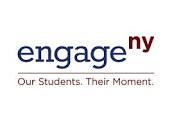
EngageNY Math Module
EngageNY math module for grade 3 and covers properties of multiplication and division and solving problems.
-

Spokane Public Schools Approved Materials
Spokane Public School’s list of approved middle school textbook/materials.
-
-
Vetting
Each district determines what they use as instructional materials. This includes OER. Five school districts in Washington State were awarded Open Educational Resources (OER) grants to help support district adaptation and implementation of openly licensed educational material aligned with state standards. All content created or modified with Washington OER grant funds is openly licensed and available to everyone. Spokane Public Schools was one of the districts to receive grant funding, and they are highlighted in this case study.
In this instance, Spokane did not go through the traditional instructional materials adoption process. In December 2013, the school board approved the use of EngageNY OER math materials as the interim math curriculum for K-8 students. At this time, the school board did not believe that book publishers had developed a math curriculum that aligned to the Common Core State Standards adopted by Washington and 45 other states. The following is an approved list of instructional materials, including OER: Middle School Textbooks/Materials.
-

Achieve’s OER Rubrics and Evaluation Tool
Achieve, in collaboration with leaders from the OER community, developed eight rubrics to evaluate the quality of instructional resources. Achieve also partnered with OER Commons to develop an online evaluation tool. OER Commons, an online repository for open education resources, is now hosting the tool and its resulting evaluation data. Resources rated on OER Commons create a pool of metadata, and this metadata will be shared through the Learning Registry with other interested repositories.
-
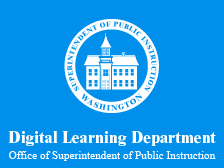
Washington State OER Grant Awards
Five school districts in Washington state were awarded a total of $90,000 in Open Educational Resources (OER) grants. The awards will help support district adaptation and implementation of openly licensed educational material aligned with state standards. All content created or modified with Washington OER grant funds will be openly licensed and available to everyone.
-
-
Professional Learning
Spokane has provided over twenty hours of training and support for teachers. Teacher leaders share resources on the LMS and through on-going professional development. Spokane utilizes the train the trainer model for professional learning. Spokane provides professional development for their teachers through the Teaching and Learning Summer Institute. Last year, Spokane conducted five sessions for one hour each for trainers and four sessions for two hours each for teachers.
Spokane offered training to surrounding districts on the implementation and delivery of the K-8 OER curriculum, as well as shared their processes and insights with other regional districts and states, including Alaska. Spokane also partnered with other participating districts to develop newsletters and videos to explain how to effectively use the OER math curriculum, homework, and supporting materials including interactive whiteboard support resources.
-

Culture Shift: Teaching in a Learner-Centered Environment Powered by Digital Learning
Alliance of Excellent Education This report examines the characteristics of learner-centered instruction and the support that educators and schools will require to make such an approach work.
-

Standards for Professional Learning Resources
Professional learning that increases educator effectiveness for all students requires prioritizing, monitoring, and coordinating resources for educator learning. The Learning Forward Standards are general standards for professional learning across K12 that highlight the importance of sustainable, ongoing, job-embedded professional learning opportunities.
-
-
Budget
Schools in Spokane are generally between a 1:2 and 1:4 student to computer (device) learning environment, so not every student has access to a device in the classroom. Spokane incurred significant costs when printing the EngageNY materials for students.
The Washington OER Project is working to help address printing challenges by creating OER User Groups to provide support for those first adopters and a platform to share best practices and implementation resources. For example, the newly emerging EngageNY Mathematics User Group will include guidance from existing users as to what portions of the materials are critical to print and what sections are appropriate for whole classroom display or other delivery mechanisms.
-

SETDA’s Examining the Budget Implications of Digital Content
SETDA considers the budget implications of using digital content.
-

Transformative Budgeting for Digital Learning
New Jersey presents strategies for transformative budgeting – a process by which innovations in schools are accomplished within existing budgets. The report includes models from several districts.
-
-
Lessons Learned
Lessons Learned
Some of the lessons learned in using OER materials:
- Teachers can access OER at school and at home through a Learning Management System
- Teachers can easily differentiate instruction for students.by accessing online exit tickets, homework, sprints, and fluencies.
- Developed newsletters and videos for the community to explain how to effectively use the OER math curriculum, homework, and supporting materials.
- Lack of available technology (devices) in the classroom for all students to have access to the digital version of the OER. Students in Spokane schools are currently in a 1:2 to 1:4 student to computer (device) learning environment.
- Printing costs can be reduced by deciding what parts of the modules to print for teachers and students
- Adequate training and support for teachers is critical as they make the transition from using textbooks in instructional practice to using OER effectively.


